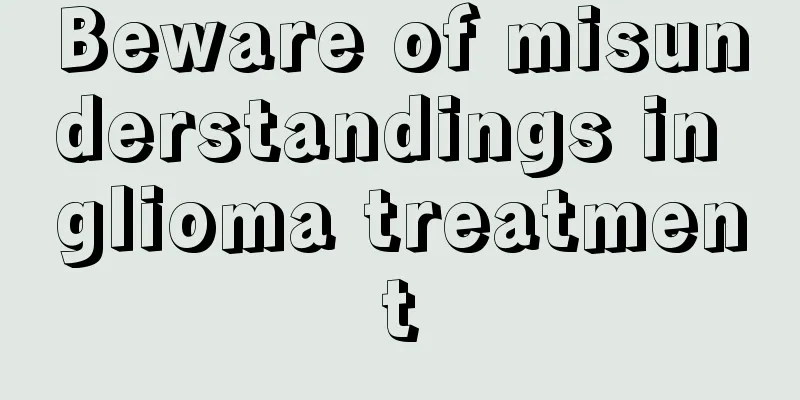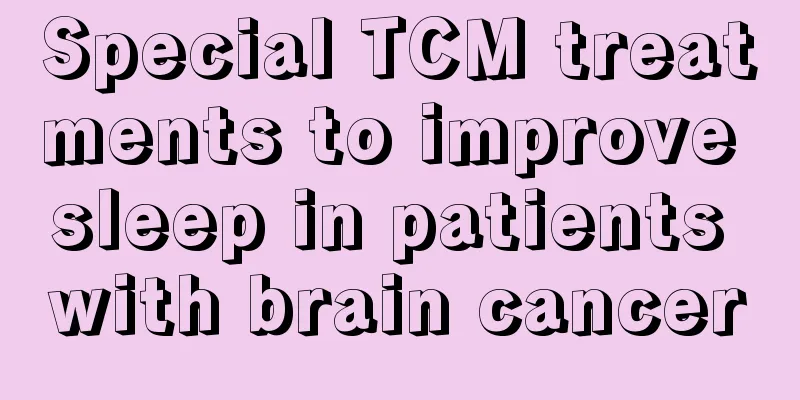Beware of misunderstandings in glioma treatment

|
Among the incidence rates of tumors throughout the body, the incidence rate of brain tumors is second only to that of stomach, uterus, breast and esophageal tumors, accounting for about 2% of all tumors throughout the body. Glioma is a malignant brain tumor. Diagnosing glioma is not as easy as cancers such as breast cancer. It is often easily confused with other diseases. Therefore, we need to pay special attention to the identification of gliomas. What are the misunderstandings in the treatment of gliomas? Glioma and epilepsy: According to reports, statistics show that 80%-90% of brain tumor patients with epilepsy as the first symptom do not have obvious symptoms of increased intracranial pressure such as headache and vomiting in the early stage of the disease, and most of them do not have papilledema. In other words, 2-3 years, or even 5-10 years before other typical symptoms of brain tumors appear, there is only one symptom of epilepsy. Therefore, this kind of epilepsy is often misdiagnosed as primary epilepsy for a long time and treated symptomatically, which delays the best time to treat brain tumors. Glioma and brain abscess: Brain abscess is a common intracranial infectious disease. With the improvement of medical conditions, the incidence of cryptogenic brain abscess is also increasing. It is characterized by a long medical history, mild infection symptoms, and imaging similar to tumors, which can easily lead to misdiagnosis as brain tumors. Although brain abscess has a space-occupying effect, patients often have infection foci, fever at onset, and signs of meningeal irritation. Peripheral blood shows leukocytosis, and inflammatory cells are present in the cerebrospinal fluid. CT scans often show round or oval low-density shadows, and enhanced scans show thin-walled and smooth ring enhancements, all of which are helpful in distinguishing brain tumors from brain abscesses. Glioma and multiple sclerosis: Multiple sclerosis is a common type of demyelination, characterized by diffuse axonal demyelination and gliosis. It often occurs around the ventricles, optic nerves, brainstem, cerebellar white matter and cerebellar peduncles, and spinal cord, and sometimes needs to be differentiated from intracranial tumors, especially gliomas. It is not difficult to distinguish typical multiple sclerosis from glioma clinically. However, for single-stage multiple sclerosis with only a single lesion and intracranial mass effect, the clinical manifestations are almost the same as those of brain tumors, making differential diagnosis very difficult. Relevant MRI, CT and other examinations should be performed for differentiation. Glioma is a malignant tumor that endangers our health, especially when it is located in the brain, which has a greater impact on us. Therefore, while achieving early detection, we must pay attention to its differential diagnosis. Differentiate brain tumors from other easily confused diseases, and avoid delayed treatment and lifelong regrets. |
<<: What are the treatments for glioma
>>: The best treatment for glioma
Recommend
How to prevent cervical cancer through diet? Dietary points for cervical cancer patients
Cervical cancer (i.e. cancer of the cervix) can o...
Does a 70-year-old with early prostate cancer need surgery?
In the early stages of prostate cancer, patients ...
There are seven kinds of food in the refrigerator. Common knowledge you must know about home life
Nowadays, every household has a refrigerator, and...
What's the matter with itchy bumps on my body
Generally speaking, if pimples appear on our body...
What are the sequelae of a mild concussion? How to treat it?
Concussion is a phenomenon of brain damage caused...
Will drinking Shengmai Drink cause internal heat?
Chinese medicine is a very traditional medicine. ...
What are the early symptoms of lung cancer patients? Introduction to the early clinical symptoms of lung cancer
Polymyositis is one of the early symptoms of lung...
Itchy throat and palate
Everyone has a throat, and above this part of the...
Benefits of Propolis
Nowadays, people pay more and more attention to h...
Clostridium botulinum poisoning
Clostridium botulinum is present everywhere in ou...
Which is better, loose powder or pressed powder
In fact, the two have similar functions, but in c...
Why are there itchy bumps on my body?
In summer, because the weather is hot and humid, ...
Can black beans be eaten with sweet potatoes?
Sweet potatoes are a potato crop with a relativel...
Is nasopharyngeal cancer considered cured after five years?
Is nasopharyngeal cancer considered cured after f...
How to get rid of bugs in the room in summer
If you have black bugs in your house, check your ...









